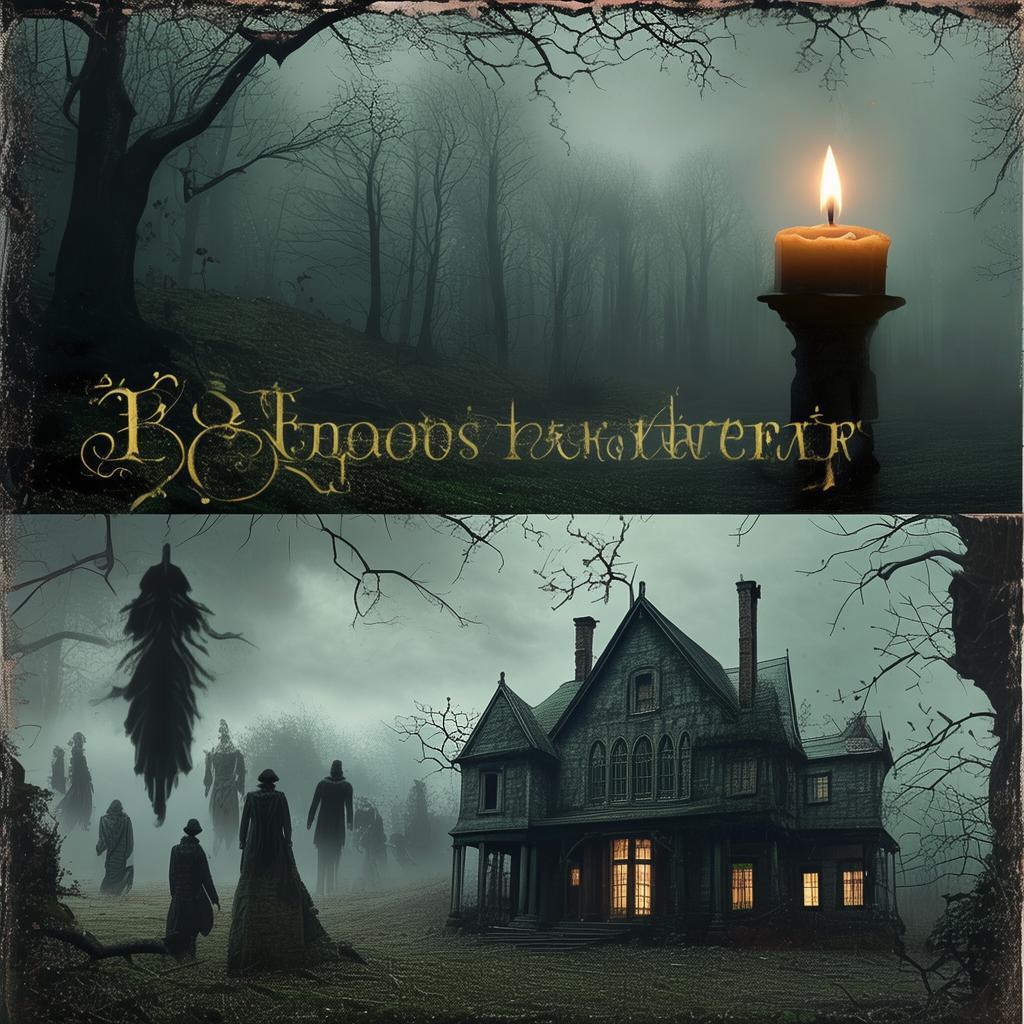Whispers in the Frame: The Lurking Presence of Silent Cinema
In the heart of a bustling metropolis, where the echoes of the past blend seamlessly with the clamor of the present, there lived a man named Eliot. Eliot was not an ordinary man; he was a silent film aficionado, whose life was a tapestry woven from the threads of forgotten celluloid. His apartment was a shrine to the silent era, filled with relics of a bygone time: old projectors, faded posters, and a vast collection of reels that had seen better days.
One rainy afternoon, as the city was enveloped in a shroud of mist, Eliot received a peculiar package. It was an unmarked box, addressed to him with a scrawled note that read, "To the keeper of silent tales." His curiosity piqued, he carefully opened the box to find a single reel of film, its surface covered in a film of dust and age.
Eliot's heart raced as he inserted the reel into his projector. The room was illuminated by the soft glow of the machine, and the screen came to life with images of a silent, black-and-white world. The film was a love story, set in the early 20th century, a time of grandeur and turmoil. It depicted the tragic tale of a young couple, Alice and Thomas, whose love was as enduring as the silent cinema itself.

As the story unfolded, Alice and Thomas faced adversity at every turn. Their love was forbidden, and their lives were torn apart by betrayal and sorrow. But as the film reached its climax, the screen went blank, and a single word appeared in bold letters: "Requiem."
Eliot's breath caught in his throat. The film had ended, yet the images lingered in his mind. He felt a strange connection to the characters, as if they were more than just celluloid specters. The word "Requiem" echoed in his mind, a haunting reminder of the film's mysterious origin.
Determined to uncover the truth, Eliot began his investigation. He traveled to the old cinema where the film had been discovered, a place now abandoned and overgrown with ivy. The building was eerie, its windows shattered, and the once-grand marquee now a relic of a bygone era.
Inside, Eliot found a dusty archive, filled with old scripts, photographs, and personal letters. Among them, he discovered a letter from Alice to Thomas, written on the eve of their wedding. The letter spoke of a promise they had made to each other, a promise that seemed to hold the key to the film's mysterious ending.
As he read the letter, Eliot felt a chill run down his spine. The words were filled with sorrow and a sense of impending doom. It was then that he realized the film was not just a love story; it was a ghost story, a tale of a love that transcended time and space.
The next day, Eliot returned to the cinema, this time with a plan. He set up a makeshift recording studio in the old projection room and began to narrate the story of Alice and Thomas, his voice echoing through the empty halls. As he spoke, he felt a strange presence, as if the spirits of the past were listening in.
When he reached the climax of the story, he paused and looked into the camera. "And so, they met their fate," he said, his voice tinged with a sense of finality. The room fell silent, and Eliot felt a sudden chill. The projector whirred to life, and the screen filled with the image of Alice and Thomas, their faces contorted in fear and sorrow.
Eliot's heart raced as he realized the film was not over. The images continued to play, revealing a shocking twist: Thomas had survived the tragedy, and his love for Alice had driven him to seek revenge on the man who had stolen her from him. The film ended with Thomas standing over a lifeless Alice, his face twisted in a mixture of grief and rage.
Eliot's eyes widened in horror as he watched the film's conclusion. The spirits of Alice and Thomas had been trapped within the celluloid, their story frozen in time. The final image on the screen was of a ghostly figure, standing in the background, watching over the scene of tragedy.
Eliot knew then that the film was not just a story; it was a warning. The spirits of the silent era were still present, watching over the world they had left behind. And as he walked out of the old cinema, he couldn't shake the feeling that the ghosts of silent cinema were not as silent as they once were.
The story of Alice and Thomas, and the haunting presence of the silent film, would remain with Eliot forever. He had opened a door to a world that had been long forgotten, and the spirits of the past had chosen him as their messenger. The American Gothic Requiem had become a ghost story of the silent film era, a tale that would be told and retold, a reminder that some stories are meant to be shared, even across the chasm of time.
✨ Original Statement ✨
All articles published on this website (including but not limited to text, images, videos, and other content) are original or authorized for reposting and are protected by relevant laws. Without the explicit written permission of this website, no individual or organization may copy, modify, repost, or use the content for commercial purposes.
If you need to quote or cooperate, please contact this site for authorization. We reserve the right to pursue legal responsibility for any unauthorized use.
Hereby declared.









